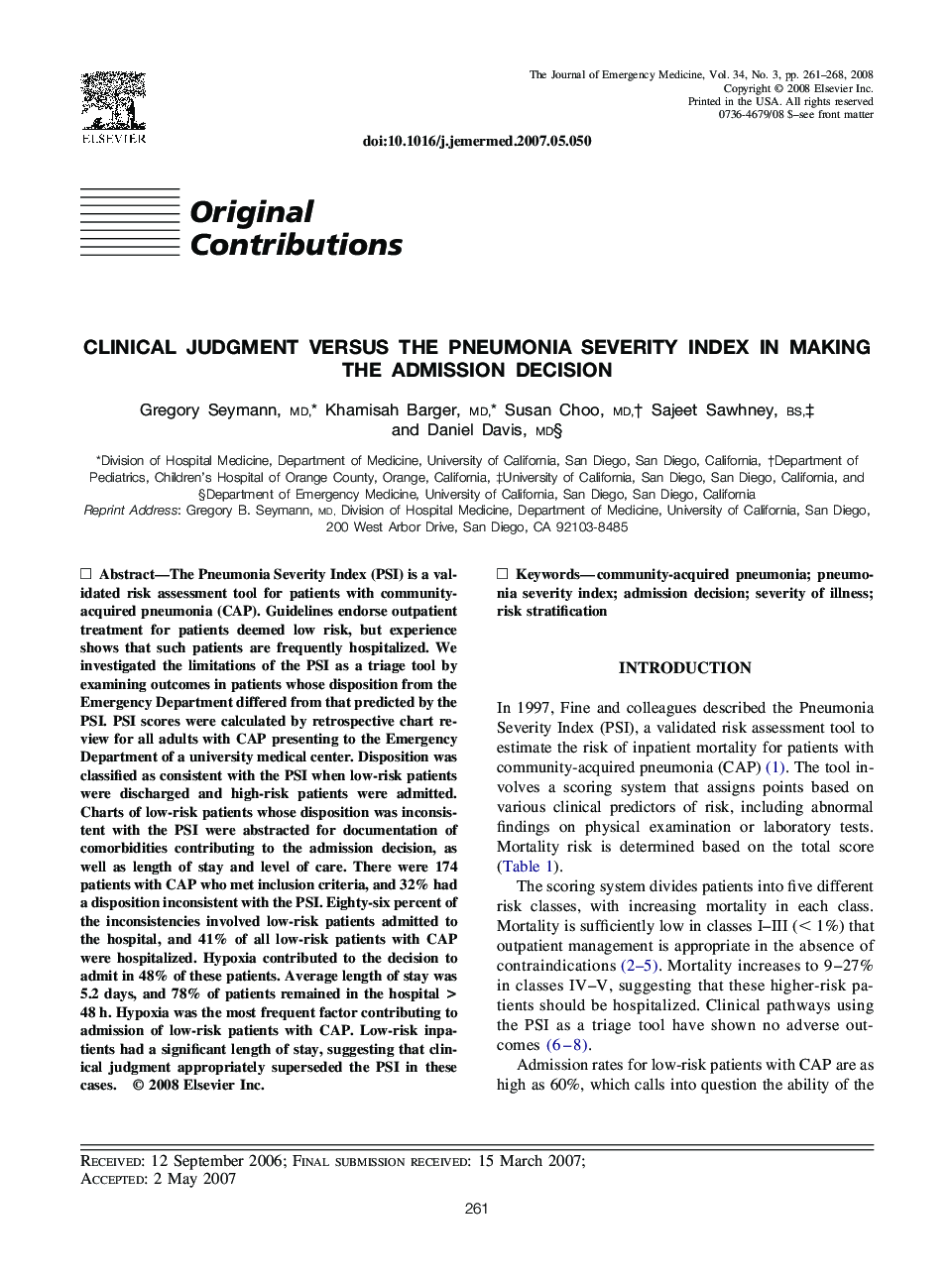| Article ID | Journal | Published Year | Pages | File Type |
|---|---|---|---|---|
| 3250009 | The Journal of Emergency Medicine | 2008 | 8 Pages |
The Pneumonia Severity Index (PSI) is a validated risk assessment tool for patients with community-acquired pneumonia (CAP). Guidelines endorse outpatient treatment for patients deemed low risk, but experience shows that such patients are frequently hospitalized. We investigated the limitations of the PSI as a triage tool by examining outcomes in patients whose disposition from the Emergency Department differed from that predicted by the PSI. PSI scores were calculated by retrospective chart review for all adults with CAP presenting to the Emergency Department of a university medical center. Disposition was classified as consistent with the PSI when low-risk patients were discharged and high-risk patients were admitted. Charts of low-risk patients whose disposition was inconsistent with the PSI were abstracted for documentation of comorbidities contributing to the admission decision, as well as length of stay and level of care. There were 174 patients with CAP who met inclusion criteria, and 32% had a disposition inconsistent with the PSI. Eighty-six percent of the inconsistencies involved low-risk patients admitted to the hospital, and 41% of all low-risk patients with CAP were hospitalized. Hypoxia contributed to the decision to admit in 48% of these patients. Average length of stay was 5.2 days, and 78% of patients remained in the hospital > 48 h. Hypoxia was the most frequent factor contributing to admission of low-risk patients with CAP. Low-risk inpatients had a significant length of stay, suggesting that clinical judgment appropriately superseded the PSI in these cases.
